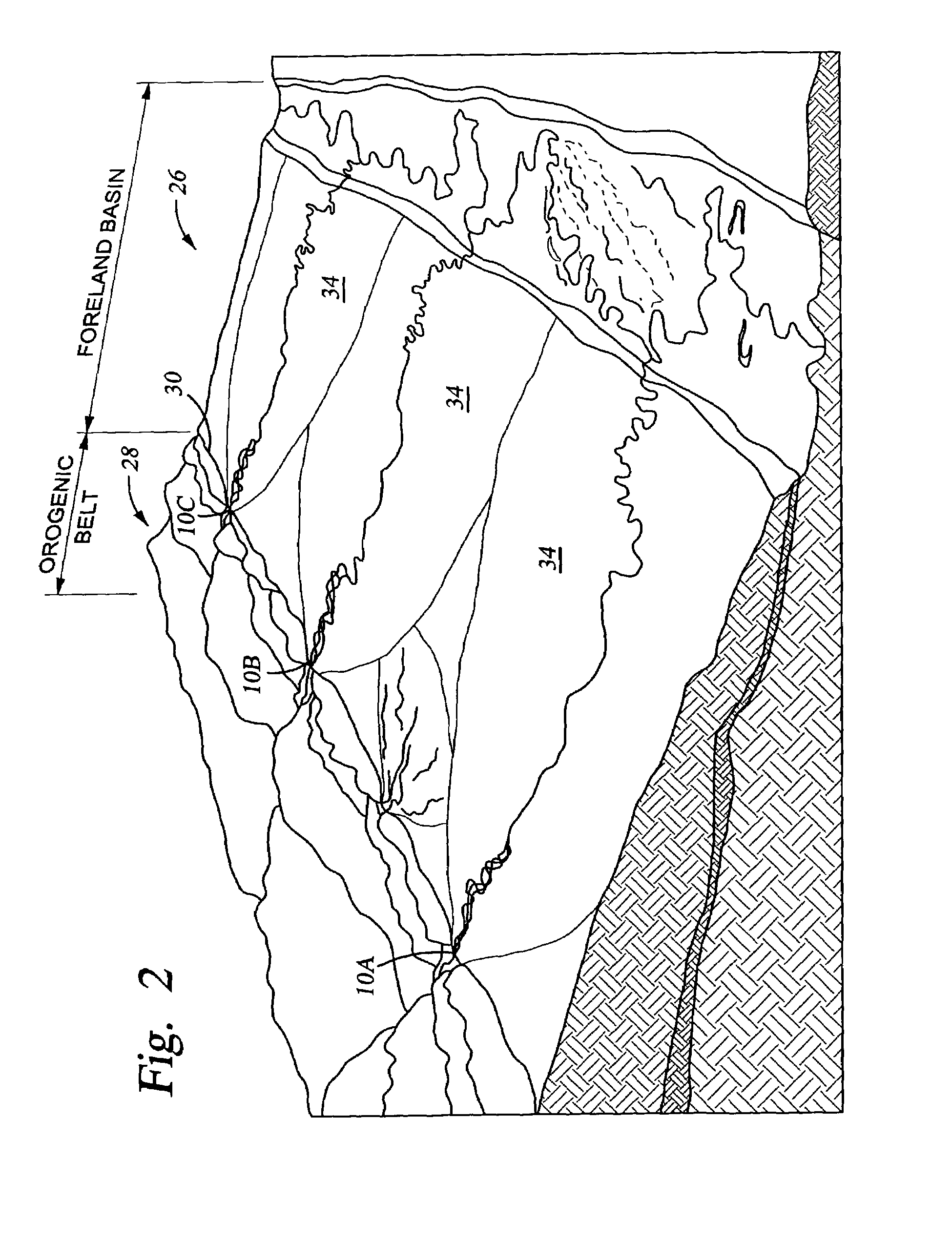Method for identifying sedimentary bodies from images and its application to mineral exploration
a technology of image and sedimentary bodies, applied in the field of geologic mapping of sedimentary bodies, can solve the problems of time-consuming and expensive exploration techniques known in the art, and achieve the effect of reducing the cost of exploration and improving the quality of exploration
- Summary
- Abstract
- Description
- Claims
- Application Information
AI Technical Summary
Benefits of technology
Problems solved by technology
Method used
Image
Examples
Embodiment Construction
[0026]Generally speaking, embodiments of a method according to the invention use remotely-sensed images of a portion of the earth's surface as input to a process for identifying particular types of sediment accumulations. “Remotely-sensed images” as used herein may include photographs made from atmospheric traveling aircraft, or spacecraft disposed above the earth's atmosphere. “Photographs” as used herein may include conventional photochemical images, or electronically generated, stored and reproduced images such as those made using a charge coupled device (CCD) camera coupled to suitable signal processing and storage circuitry.
[0027]Various embodiments of the invention, as will be further explained, include identification of selected features from the images. Identification of the selected features may include appropriate programming operating on a computer which enables the computer to discriminate portions of the image on the basis of image attributes such as color or brightness...
PUM
 Login to View More
Login to View More Abstract
Description
Claims
Application Information
 Login to View More
Login to View More - R&D
- Intellectual Property
- Life Sciences
- Materials
- Tech Scout
- Unparalleled Data Quality
- Higher Quality Content
- 60% Fewer Hallucinations
Browse by: Latest US Patents, China's latest patents, Technical Efficacy Thesaurus, Application Domain, Technology Topic, Popular Technical Reports.
© 2025 PatSnap. All rights reserved.Legal|Privacy policy|Modern Slavery Act Transparency Statement|Sitemap|About US| Contact US: help@patsnap.com



